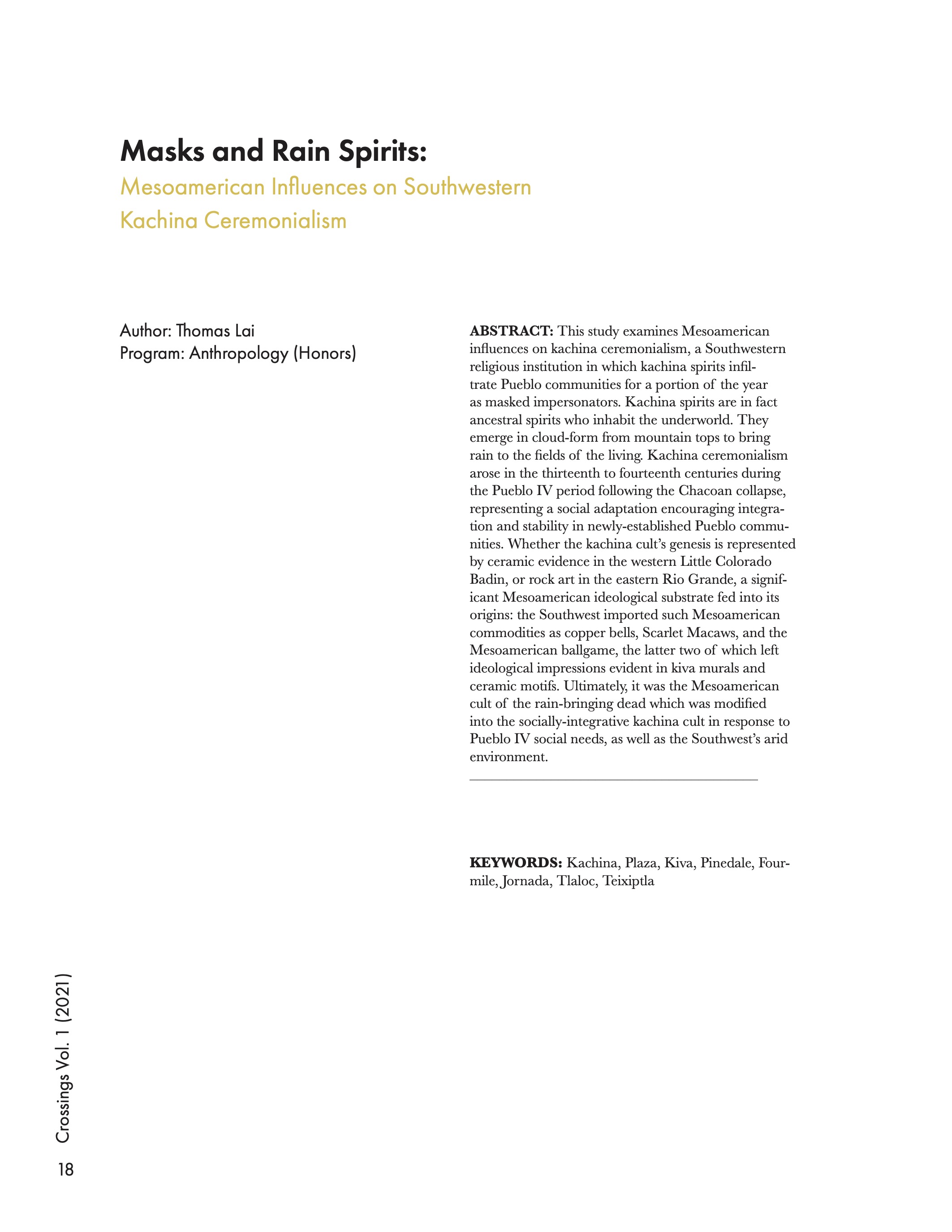Masks and Rain Spirits
Mesoamerican Influences on Southwestern Kachina Ceremonialism
DOI:
https://doi.org/10.29173/crossings18Keywords:
Kachina, Plaza, Kiva, Pinedale, Fourmile, Jornada, Tlaloc, TeixiptlaAbstract
This study examines Mesoamerican influence on kachina ceremonialism, a Southwestern religious institution in which kachina spirits infiltrate pueblo communities for a portion of the year as masked impersonators. Kachina spirits are in fact ancestral spirits who inhabit the underworld. They emerge in cloud-form from mountain tops to bring rain to the fields of the living. Kachina ceremonialism arose in the 13th to 14th centuries during the Pueblo IV period following the Chacoan collapse, representing a social adaptation encouraging integration and stability in newly-established pueblo communities. Whether the kachina cult's genesis is represented by ceramic evidence in the western Little Colorado Basin, or rock art in the eastern Rio Grande, a significant Mesoamerican ideological substrate fed into its origins: the Southwest imported such Mesoamerican commodities as copper bells, Scarlet Macaws, and the Mesoamerican ballgame, the latter two of which left ideological impressions evident in kiva murals and ceramic motifs. Ultimately, it was the Mesoamerican cult of the rain-bringing dead which was modified into the socially-integrative kachina cult in response to Pueblo IV social needs, as well as the Southwest’s arid environment.

Downloads
Published
Issue
Section
License
Copyright (c) 2021 Thomas Lai

This work is licensed under a Creative Commons Attribution 4.0 International License.

